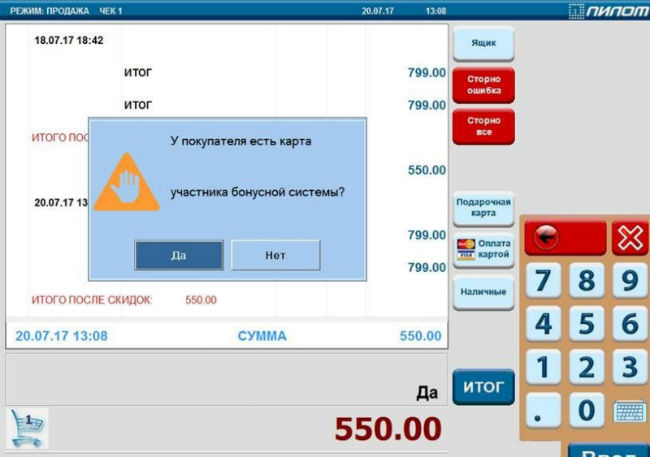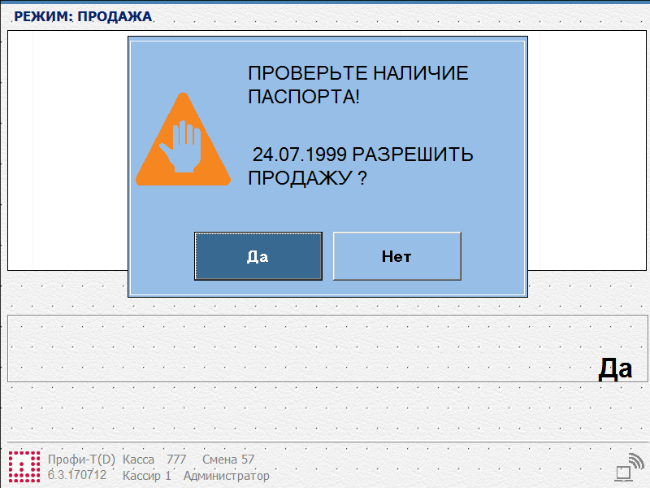Advantages of automation: how technology corrects mistakes of store employees

In our blog, we write a lot about technologies in the field of retail and automation of modern stores . The advanced infrastructure allows not only to increase the efficiency of all processes in retail outlets, but also to minimize the influence of the “human factor”. Today we will talk about how technology helps to prevent the mistakes of store employees.
Ignoring loyalty cards and pre-sales
Employee errors can lead not only to problems with the inspection bodies, but also deprive the store of potential profits. It is no secret that many retailers are actively working to develop loyalty programs that encourage customers to buy more and more often. However, without the participation of the employee behind the cash register, the full operation of any loyalty system is impossible.
')
US retailer WalMart collects sales data in order to predict possible patterns of customer behavior. Sometimes the use of such technologies allows you to get unexpected results. For example, on Friday night, men are more likely to buy diapers for children, and for themselves - beer . Thus, the cash software, which contains the knowledge of this fact, can advise the cashier to offer an additional product, unexpected at first glance, when buying beer. The cashier himself could offer something more appropriate to the beer in his opinion - and would have miscalculated. After finding such a correlation in the Walmart, the diaper section was moved closer to the beer coolers.
Often, employees simply forget to ask the client whether he has a special loyalty card or offer him to get it. To avoid this, the cash software can show special reminders - this is how the Profi-T system does. As a result, the likelihood that a customer will issue a loyalty card and begin to actively participate in the program increases.

In addition, the employee largely depends on whether the sale will end. In a material on retail automation, a journalist from the Pando publication told a story about how one of his acquaintances, a venture investor, went to an electronics store. The buyer was already at the checkout and was going to buy an expensive gadget when the seller asked him if he had seen a new, more powerful model of the device that will be released soon. As a result, he decided to abandon the purchase and wait for the new version.
More often, the sale does not happen because of the inactivity of the seller - the employee may not offer the customer to make an additional purchase. To prevent this from happening, the cash software can also generate recommendations on what additional products to offer to the customer along with his purchase - this increases the chances of increasing the final check.
Errors when working with products
In addition to problems with customer communications, there may be also purely technical errors, which, nevertheless, are costly for shops. One of these problems is the updating of price tags for goods and errors arising during this process, leading to negative from the buyers.
A common situation is that the product has one price in the cash register software, but for some reason it turned out to be different on the price tag (for example, the employee made a mistake or forgot to change it). Usually, all this becomes clear already at the checkout, when the goods “made their way” at a higher price than the buyer expected - and very few people will like it.
While there is a clarification of the reasons for the discrepancy, the queue is going to turn, customers are experiencing negative. And any residue left by the buyer leads to the fact that another time he will not come to this store, preferring a competitor. In addition, by law, the store is obliged to sell the goods to the customer at the price indicated on the price tag. That is, errors in the design of price tags lead to direct financial losses.
To avoid such problems, some retailers use the technology of electronic price tags , the information on which can be updated centrally through a special server without the need for manual labor.

However, the introduction of electronic price tags (hardware + software) is quite expensive, and this still affects the penetration of technology.
There are more budget ways to reduce the likelihood of errors. One of them is mobile revaluation technology . This approach involves the use of special hardware and software complexes in the process of revaluation of goods. They include specialized software (for example, Pilot has its own development, the OmniLink software package ), data collection and processing terminals, as well as mobile thermal printers.
It works this way - when prices are updated or an employee sees that the cost of goods in the accounting program has changed and does not coincide with the actual price tag, he goes to the shelves with the goods and starts the scanning process. If the system finds a discrepancy in prices, it automatically sends a command to print a new price tag. Mobile printers are placed on the employee's belt, so the price tag is printed on the spot. This reduces the likelihood of errors and greatly simplifies the revaluation process.
In addition, the use of automation technology allows employees of the store and the administration of the outlet to better understand the location of a particular product. This, among other things, reduces the likelihood of the goods being lost or stolen.
British retail consultant Romeo Richards on his blog cites the following calculations about this - if we have a network with a turnover of £ 10 million pounds and retail shrinkage (i.e. write-offs of lost, spoiled or stolen goods) at 2%, and for employees' mistakes accounted for 18% of this "shrinkage", then in a year it will result in a loss of £ 36,000. If the store’s net profit level is 1%, then in order to cover these losses, it will be necessary to generate sales of £ 3.6 million. How many shops can do this so easily? Therefore, automation is very important.
Violation of laws and regulations
One of the most common mistakes of cashiers is the sale of alcohol and cigarettes without asking for a passport. If such goods are sold to minors, and this becomes known during the inspection or, for example, a test purchase, a large fine will be issued to the store.
To avoid such problems, possible mistakes of employees are corrected with the help of technologies - for example, the Profi-T system developed by us gives the cashier tips and tricks in the course of service. Among them is the requirement to ask for a passport when selling alcohol. When you try to “punch” such a product, a signal sounds and a corresponding message is displayed on the cash register screen.

Future: Is technology threatening employees?
According to research , automation can seriously threaten the prospects of store employees - according to some sources, up to half of all positions in retail can be automated in the future. Some positions may not completely disappear in the future - for example, the position of a cashier.
But the next two or three years on the retail market is unlikely to change dramatically: no matter how fast-paced the development of retail automation, so quickly it will not remove “human” professions. However, indeed, the development of technology for trade helps store owners to reduce staff. There are several notable trends developing in Russia:
- product accounting automation processes. Electronic price tags, mobile printers allow retailers to reduce staff and expenses for consumables. In both cases, store employees are not required to manually print out price tags and paste them around the room;
- the introduction of self-service in the store reduces the number of cash desks and, accordingly, cashiers, as well as optimizes cash handling;
- Digital Signage technology will help the retailer to reduce the cost of promotions and, consequently, reduce the number of personnel involved in them. In addition, this tool allows you to sell advertising time to your partners and have an additional source of income;
- Information kiosks will help reduce the staff of consultants. Buyers, simply by scanning the barcode of the product of interest, will clarify its price and get additional information about it. Retailers can display any multimedia content on the kiosk.
In addition, the development of technology contributes to the reduction of the area of retail outlets - it may be more profitable for a business to have a small automated store with a small number of staff. However, those workers who remain in such stores will have to become more productive and learn how to manage technological means.
Such a transition to more advanced skills than simple physical work, on the other hand, will contribute to the growth of employee salaries. At the same time, the likelihood remains that the increase in the efficiency and profitability of stores will ultimately lead to an increase in their number - as the appearance of ATMs allowed banks to open more branches in which employees not only give out money, but also provide other financial services, such as loans, and communicate with customers.
Other materials on the topic:
Source: https://habr.com/ru/post/334082/
All Articles